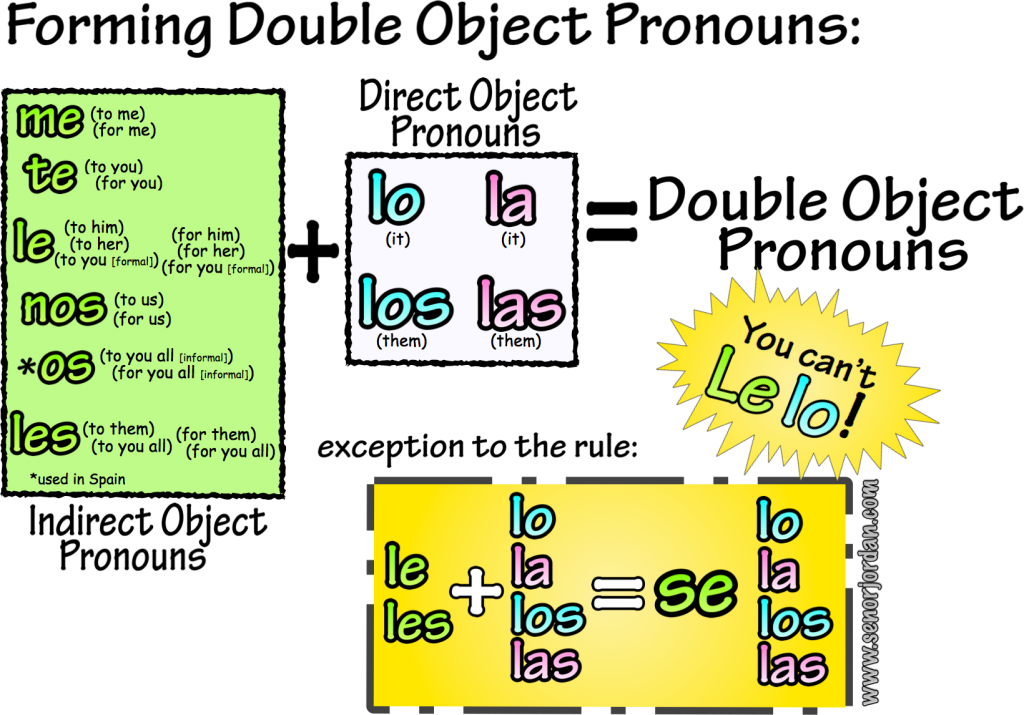In this video lesson we’re going to be practicing Double Object Pronouns.
If you aren’t sure what that means, it means we’ll be using both Direct Object Pronouns and Indirect Object Pronouns in the same sentences.
Leave any questions or comments below!


2 Responses
Hi Senor Jordan,
Thank you very much for having done all these efforts to teach us Spanish. Fantastic!
I have a question. Why does the question in the video start with an indirect object pronoun? I thought the DOP and IOP are only used when we know who we are talking or what we are talking about.
Thanks in advance and I wish you well,
Ahmed.
Ahmed,
Thanks for your question. You might refresh your understanding of Indirect object pronouns on my video on them. The indirect object pronouns are always used even when the clarifying / emphasizing information (a + person) isn’t used.
Example:
Él le dice eso.
He says that to him/her/you (formal)
Clarifiying information:
Él le dice eso a Elena.
He says that to Elena.
Él le dice eso a Miguel.
He says that to Miguel.
Notice in these examples “le†is required even when we say “a Elena/Miguelâ€
Now for emphasizing information:
Él me dice eso.
He says that to me.
Emphasized:
Él me dice eso a mÃ.
He says that to ME!
Notice again that “a mÆis not necessary because we already have “meâ€. If we use it it will be to add emphasis since no clarification is needed.
So to summarize, the indirect object pronoun (me, te, le, nos, *os, les) are required while the clarifying information or emphasizing information is not.
The exception could be in poetry and literature, you might find that the pronoun is not used while the clarifying information is. In speech this is not generally accepted though.
Hope that helps!
-Sr. Jordan